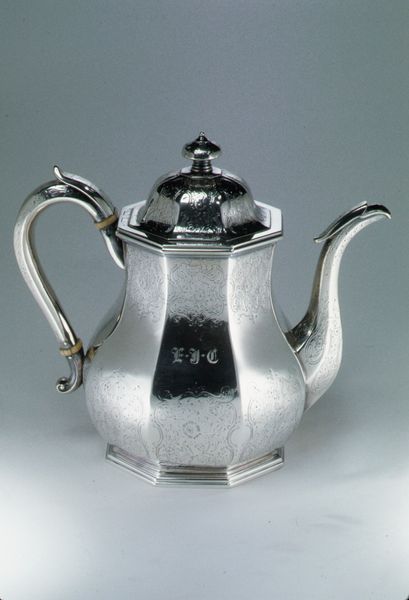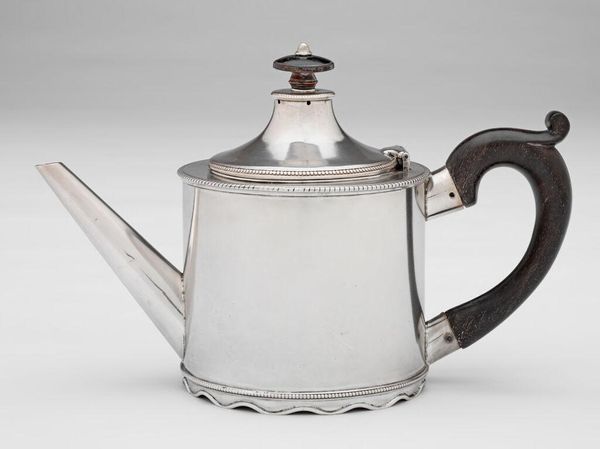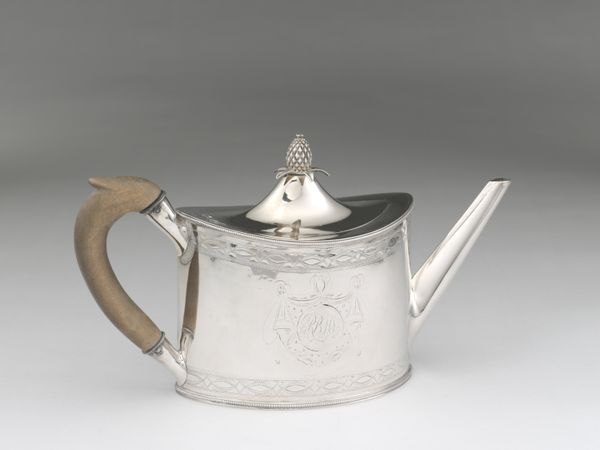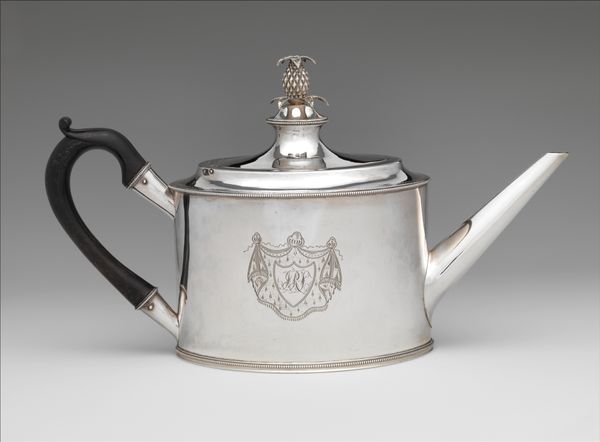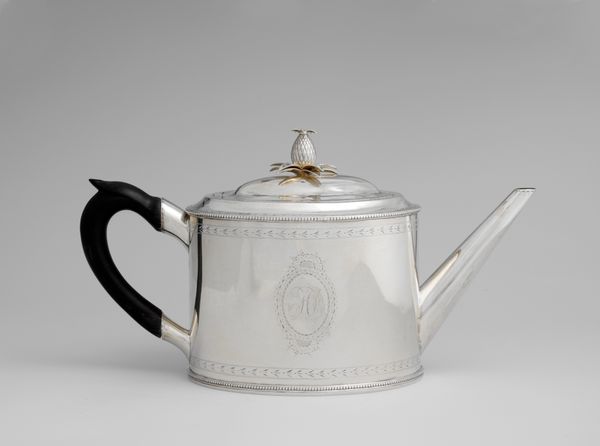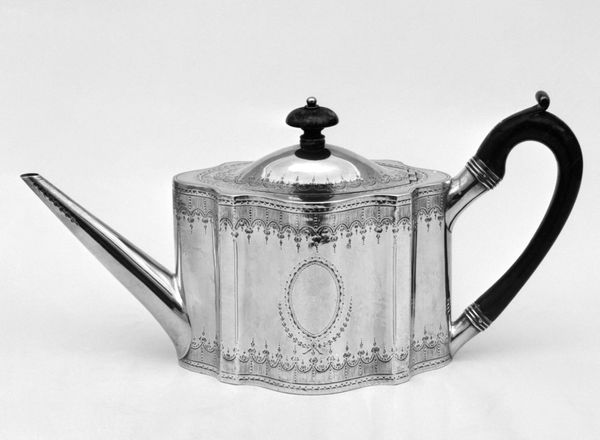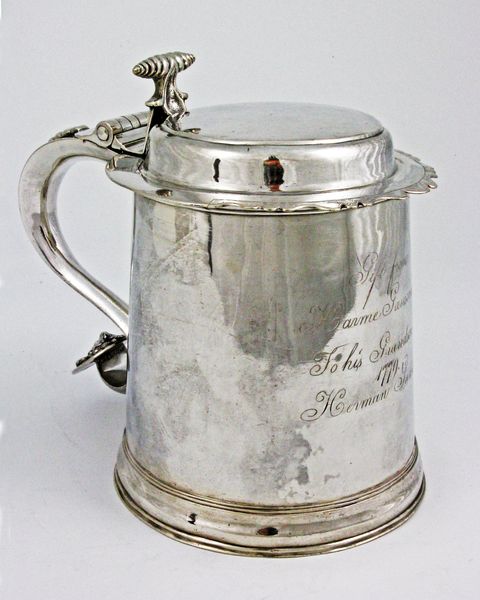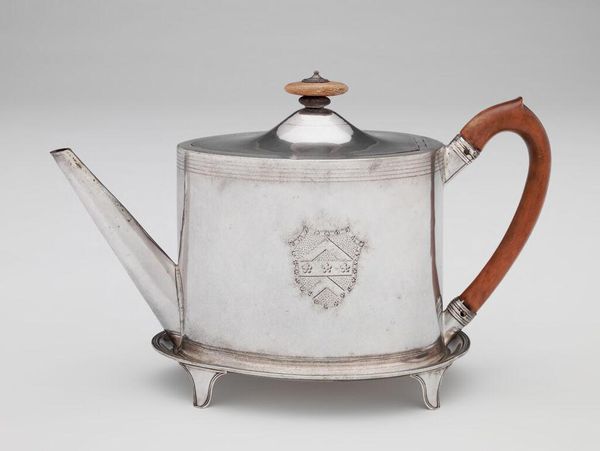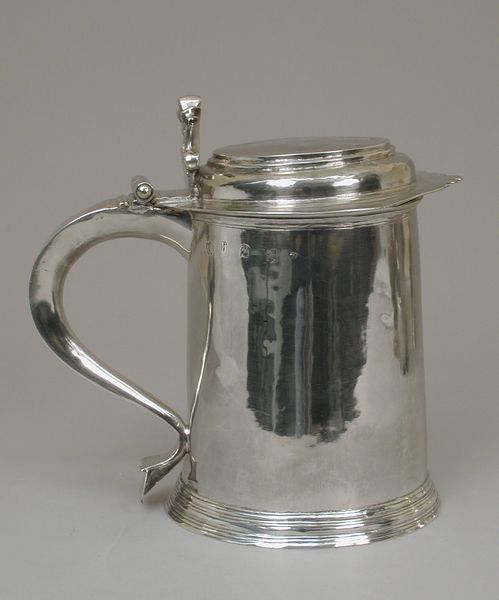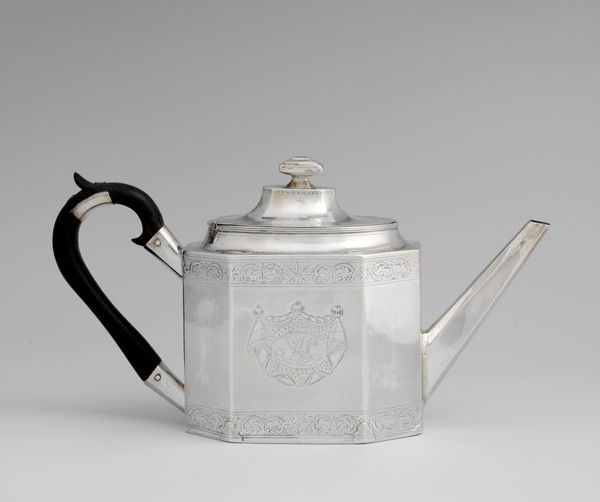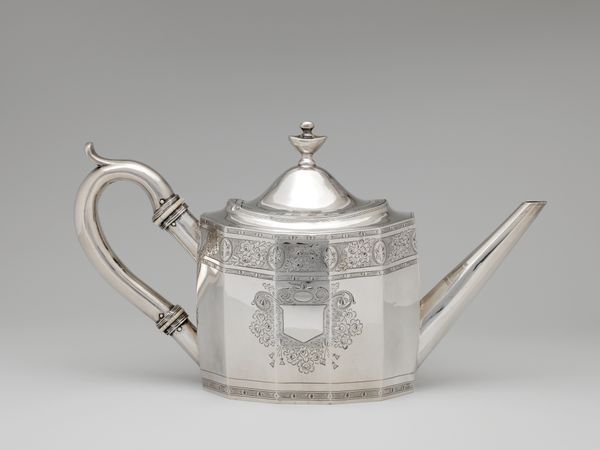
metal, sculpture
#
neoclassicism
#
metal
#
sculpture
#
15_18th-century
#
ceramic
#
united-states
#
decorative-art
Dimensions: Overall: 6 5/8 x 12 in. (16.8 x 30.5 cm); 22 oz. 16 dwt. (709 g) Base: 6 7/16 x 4 9/16 in. (16.4 x 11.6 cm)
Copyright: Public Domain
Editor: So, here we have a silver teapot made sometime between 1785 and 1800, currently held at The Met. The sharp lines against the sheen of the silver give it an almost futuristic quality, even though it's centuries old. How would you approach interpreting a piece like this? Curator: One might start with its formal composition. Note the stark contrast between the cylindrical body and the angular spout, as well as the handle’s dark hue versus the reflective body. This play suggests a dialogue between stability and dynamic projection. Do you perceive this contrast creating visual tension? Editor: Definitely. The stark geometry, especially the triangular lid, is interesting, and the dark handle emphasizes the polished metal. But I’m curious about the almost severe simplicity… Curator: Precisely. This austerity is crucial. Notice the bare surface disrupted only by the circular engraving, echoing Neoclassical values that privileged order and clarity over ornamentation, which is itself a commentary against prior styles. Editor: I hadn't thought about the absence of detail *as* a detail itself. And now that you point out the Neoclassical style it becomes more obvious. Does the contrast in materials – the black handle against the silver – carry any particular significance from a Formalist perspective? Curator: The choice of materials enhances the aesthetic intent, contrasting textures invite closer tactile engagement, as do light playing across different reflective surfaces. It reinforces that duality of form versus function. It is not only pleasing to the eye, but subtly complicates expectations of use. Editor: I see now how analyzing the intrinsic elements reveals so much about artistic intentions. Curator: Indeed. By attending to composition, surface, and contrast, we access how the work communicates meaning visually, and that the object invites consideration.
Comments
No comments
Be the first to comment and join the conversation on the ultimate creative platform.

